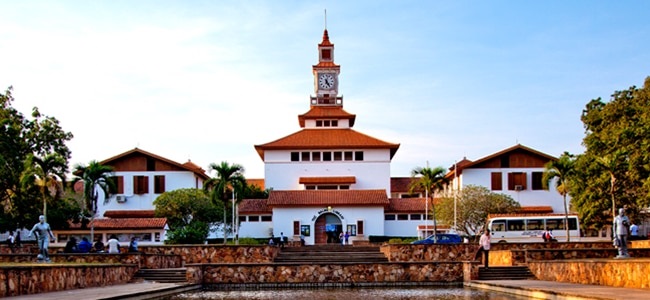
The benefits of higher education to the individual, the family, the community and the State are well documented. For the individual, higher education bestows social status, access to employment and higher earnings.
Many studies have established the link between higher education and better quality of life, with university graduates recording greater life expectancy than their less educated counterparts. Citizens who have benefited from higher education also contribute significantly to economic growth and stability and improve social and political discourse, often leading to the strengthening of democratic systems.
It is these benefits of higher education that has led countries all over the world to employ various strategies to expand access to higher education. The UN Sustainable Development Goal (SDG) Goal 4, target 4.3 states that by 2030, countries “should provide equal access for all women and men to affordable and quality technical, vocational and higher education, including university”. The principle is that all who have the ability and the desire to pursue higher education should not be denied access because of the lack of financial means.
In Ghana, tertiary education includes public and private universities, polytechnics, distance learning institutions, colleges of education and nurses training colleges. Over the years, Governments have tried to create access for Ghanaians to these institutions, from the first decade after independence where tertiary education was free, including tuition and living expenses.
This model was however not sustainable as competing demands for Government’s scarce resources increased in areas such as health, agriculture and basic education. This state of affairs created a challenge for equal access to tertiary education in Ghana.
This led in 1968 to the proposal to introduce a student loan system by the Dowuona Committee which was tasked to review the financing of education. This culminated in the introduction of an unpopular and short-lived Student Loan Scheme in 1971 which was abolished a year later when General Ignatius Kutu Acheampong overthrew Prime Minister Abrefa Busia and his Government.
The quest for an equitable and sustainable means of funding tertiary education was however not over and Ghana experimented further with a loan to finance books and living expenses in 1975 whiles tuition fees remained free. The loan was disbursed by a state bank. Kotey (1992) contends that the scheme met with abysmal repayment rates largely because the loan financing came from the Government and not the bank. After an equally problematic experiment in 1986, the SSNIT Loan Scheme was introduced in 1989 and lasted until 2006.
The challenges impeding wider access to tertiary education among poorer households in Ghana, is what led to the establishment of the Students Loan Trust Fund (SLTF) in December 2005 as part of reforms to make tertiary education more accessible to the majority of qualified Ghanaians undertaking accredited programmes in accredited tertiary institutions. The Trust Fund also has the responsibility to recover loans from students after the completion of tertiary education.
A recent World Bank report, Sharing Higher Education’s Promise Beyond the Few in Sub-Saharan Africa, published in October 2017 notes that;
To date, access to tertiary education in Sub-Saharan Africa has unduly benefitted students drawn from the region’s wealthiest households, and overall enrollment remains disproportionately male, and metropolitan. These factors stifle the catalytic potential of higher education, corroding its potential for driving economic growth and sustaining poverty reduction. Instead, patterns of access to tertiary education have generally reinforced and reproduced social inequality, instead of eroding its pernicious social and economic effects.
For brilliant but needy students who cannot secure one of the limited number of scholarships available in Ghana or elsewhere, it should not be the end of a dream. A Government subsidized Student Loan from the Students Loan Trust Fund is the best ticket to tertiary education and a more secure future. Loans may be used to pay for tuition fees, accommodation, books, computers and accessories or general living expenses.
Steps to Widen Access
The Trust has taken several significant steps to widen access for students from less privileged backgrounds. The number of SSNIT guarantors that a borrower needs to access the loan has been reduced from three persons to one. Alternatively, applicants may choose to have their loans guaranteed by their District Assembly, Church, or Mosque. This arrangement is to cater for applicants who may not have close relatives working in the formal sector.
The loan amount has also been increased to cater for increased living costs with the minimum amount being one thousand five hundred cedis and the maximum three thousand cedis a year. The SLTF also offers the lowest unsecured interest rate available at 12% compared to rates above 25% for private financing, making it the best facility available to parents and students on the market. Additionally, borrowers are not expected to start repayment of the loan until two years after the completion of their course when it is expected that they would be in employment.
Conclusion
Tertiary education will remain elusive for the poorest of the poor and will continue to favour those who had the opportunity to attend better resourced basic schools where students are better prepared for higher education, however the subsidized student loan with its generous repayment conditions offers a real opportunity for students who would otherwise not have had the opportunity to experience tertiary education and enjoy all the benefits it bestows on the individual, the community and the nation as a whole.
By George Ferguson Laing | The Writer is the Senior Public Relations Manager at the Students Loan Trust Fund | glaing@sltf.gov.gh




